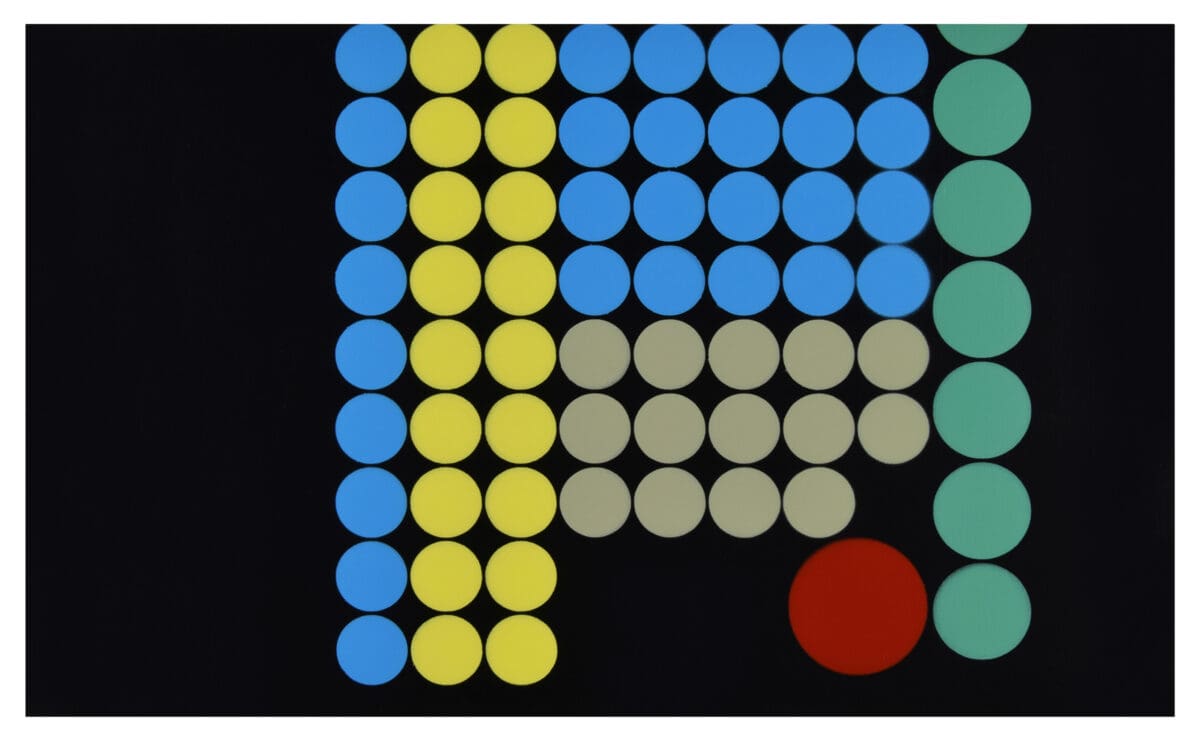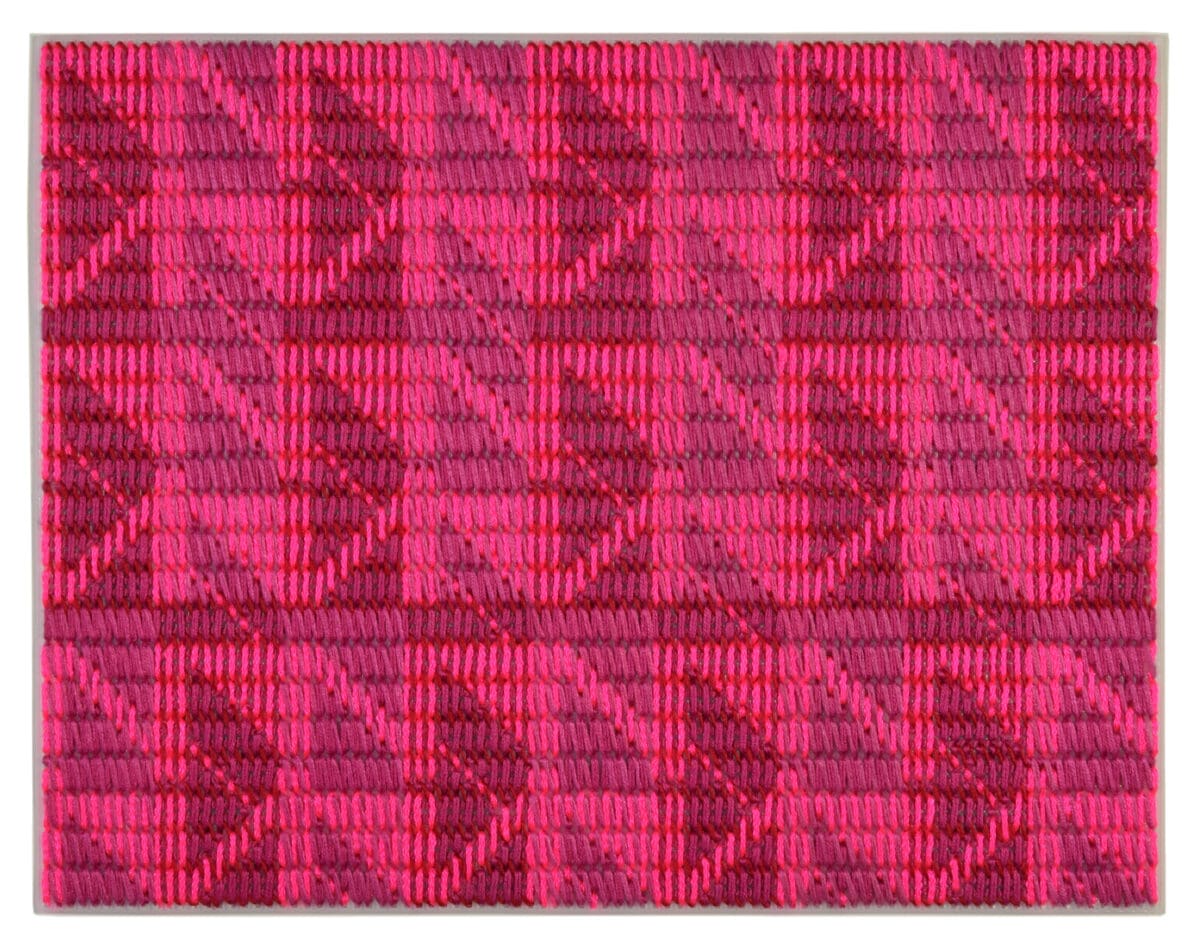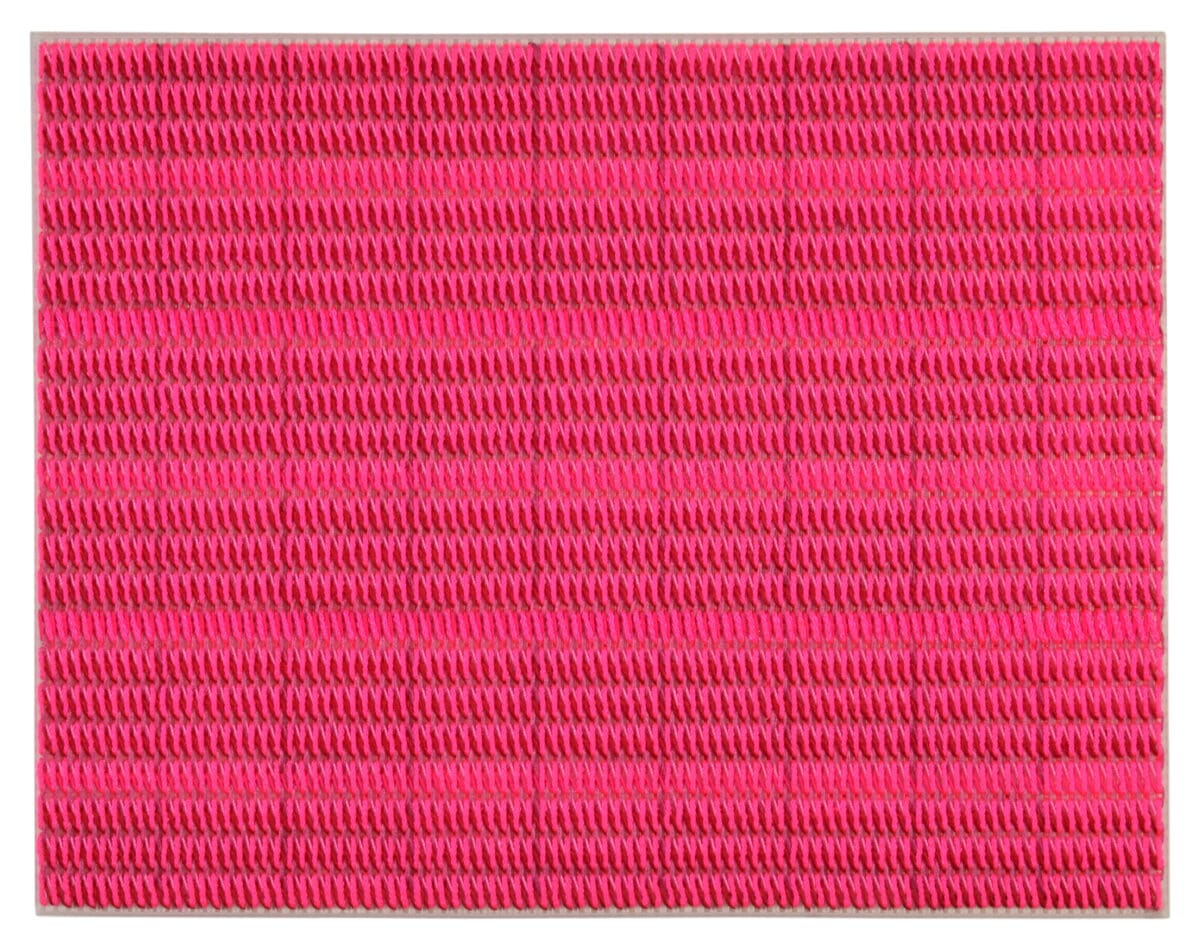
Poetics of Relation
Tender Comrade, currently on show at Sydney’s White Rabbit Gallery, creates a new vocabulary of queer kinship by reimagining the relationship between artworks, bodies and space.







Dana Harris and Peter Atkins have never exhibited together, nor collaborated on an artwork, despite having been sounding boards for each other’s creative output over several decades. They met at the National Art School (and have been a couple) since the mid-1980s, and their studios are in the same inner-Melbourne building. Yet it was only recently that the two artists entered a new domain: showing their latest bodies of work together at TarraWarra Museum of Art.
While the separate three-year-long projects made by Harris and Atkins have individual stories to tell, other narratives emerge from their being intentionally shown together—and from being sited among two other connected exhibitions at TarraWarra.
Harris and Atkins began work on their new projects at the start of the extended lockdowns in Melbourne, using the enforced home-time to explore their distinct areas of interest in new ways. The exhibition SUPERsystems, while not a collaboration, reveals their shared interests in systems, from geometry and grids to repetition, abstraction, and colour.
Early during the lockdowns, Harris decided to investigate embroidery, a skill she had not previously attempted. Titled fancywork, the 22 small-framed embroideries had their foundations in the walks Harris and Atkins would do around inner Melbourne during the imposition of five-kilometre limits. “Everything changed and I started looking at the landscape differently on account of there not being any industry, people or cars about,” Harris says. “It was slightly eerie, but I started to really look forward to that experience, noticing details I hadn’t seen before in quite the same way.”
As she learnt to embroider, she worked with grids but did not use drawings as a background guide: rather, she chose the riskier method of applying the mathematics in her head. It was slow progress at first, but eventually she inhabited the complex experience very deeply, working away with fluorescent pink cord and a range of other pinks (and one red) in embroidery cotton.
“What I was trying to do was express the differences in the landscape I was experiencing, putting forward a version of landscape that I hadn’t seen before. At the same time, I strive for elegance and beauty.” In titling the embroidery fancywork, Harris acknowledges a centuries old tradition that mainly applies to women. When her own 22 panels were mounted in one of the soaring rooms at TarraWarra, Harris was startled at being “reintroduced” to objects she had so intimately created, seeing how the work “held itself” in the large space.
Atkins work sits in the gallery in conversation with Harris’ embroideries. By contrast, he began from an interest in how the lockdown experience meant that people were largely inhabiting screen-space rather than the “real” world. He noted how friends would often discuss and suggest the TV series they were watching. In response, he decided to watch the entire James Bond film collection, beginning with the first Bond film, Dr. No (1962).
“I thought I could have a mini festival, but I didn’t really get past the opening sequences,” Akins says. This animated title sequence was created by Maurice Binder and Atkins had recalled how amazing he had first found it and its references to 1960s computers. Using software, he deconstructed the Binder animation into individual frames, selecting a portion of these as the basis for painted panels of coloured discs on black backgrounds.
Titled Dr. No (after Maurice Binder), the paintings occupy a vast wall space. “I was really happy when I finally had it installed because it worked exactly as I had hoped,” Atkins reflects. “There are so many aspects of it that have my interest – colour and form, and the beauty of those colours together. They are quite painterly. But it becomes something very different to Binder because it is static and deconstructed and you can see it all at once.”
Both Atkins and Harris have long been interested in design, especially in the Bauhaus and De Stijl movements. This led them to begin collecting modernist design work and furniture by Clement Meadmore (known mainly for his sculpture), which is showing in adjacent spaces at TarraWarra. The Industrial Design of Clement Meadmore: The Harris/Atkins Collection, also speaks to another current exhibition, Systems and Structures, which features Australian artists who also employ patterns, geometry, modules and repetition in their work.
SUPERsystems
Dana Harris and Peter Atkins
TarraWarra Museum of Art
On now—14 July


